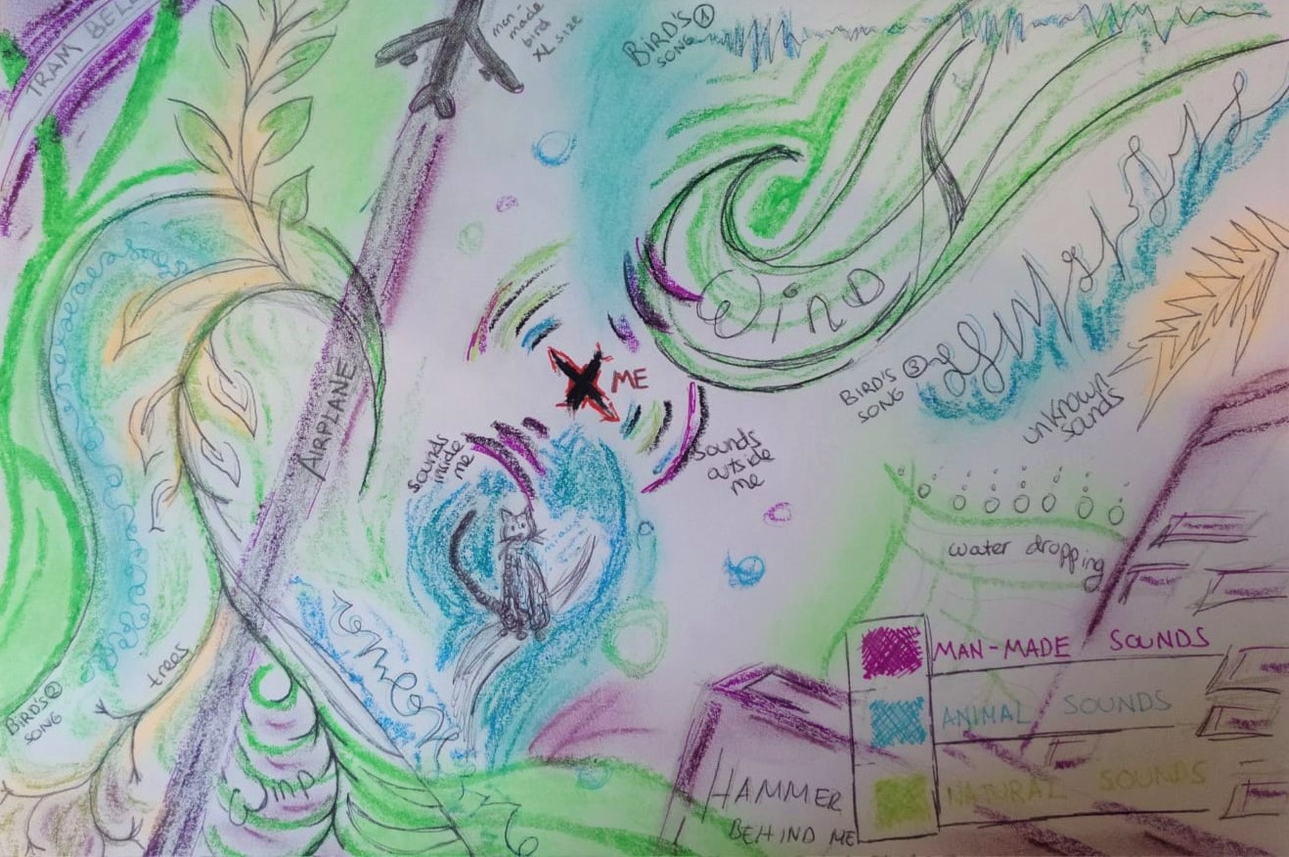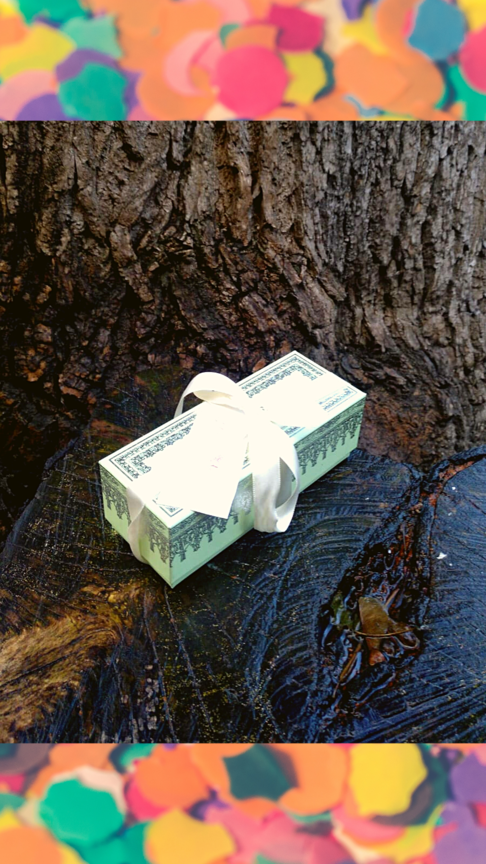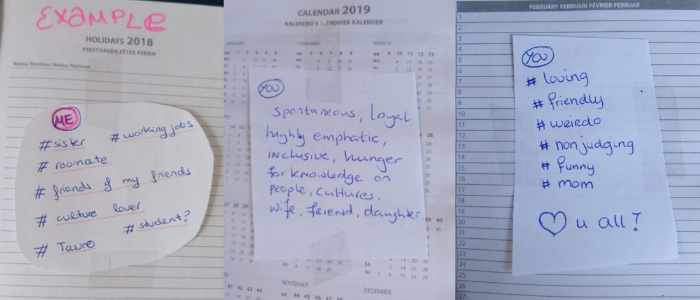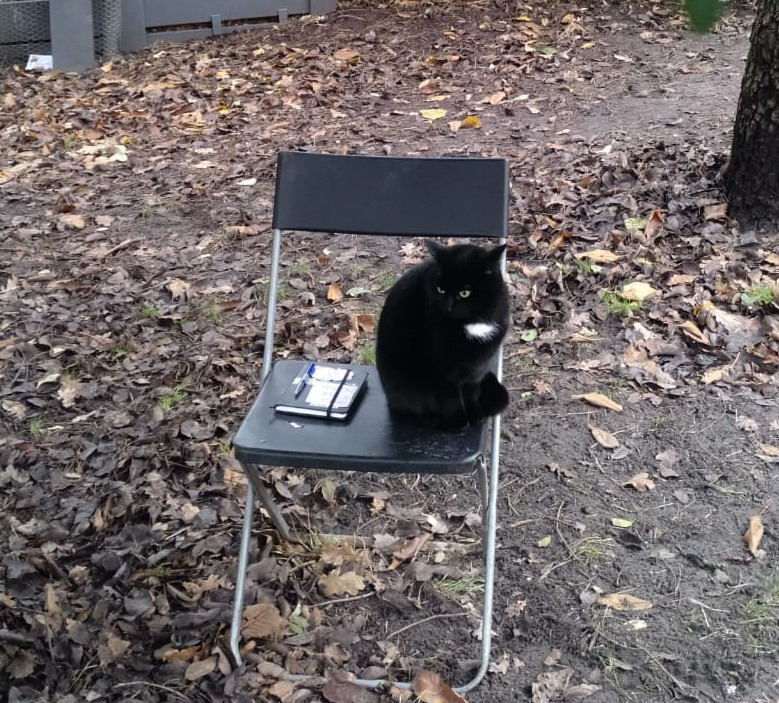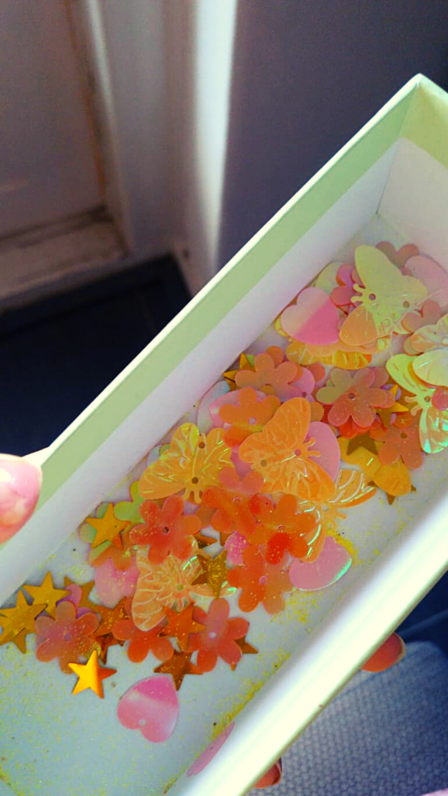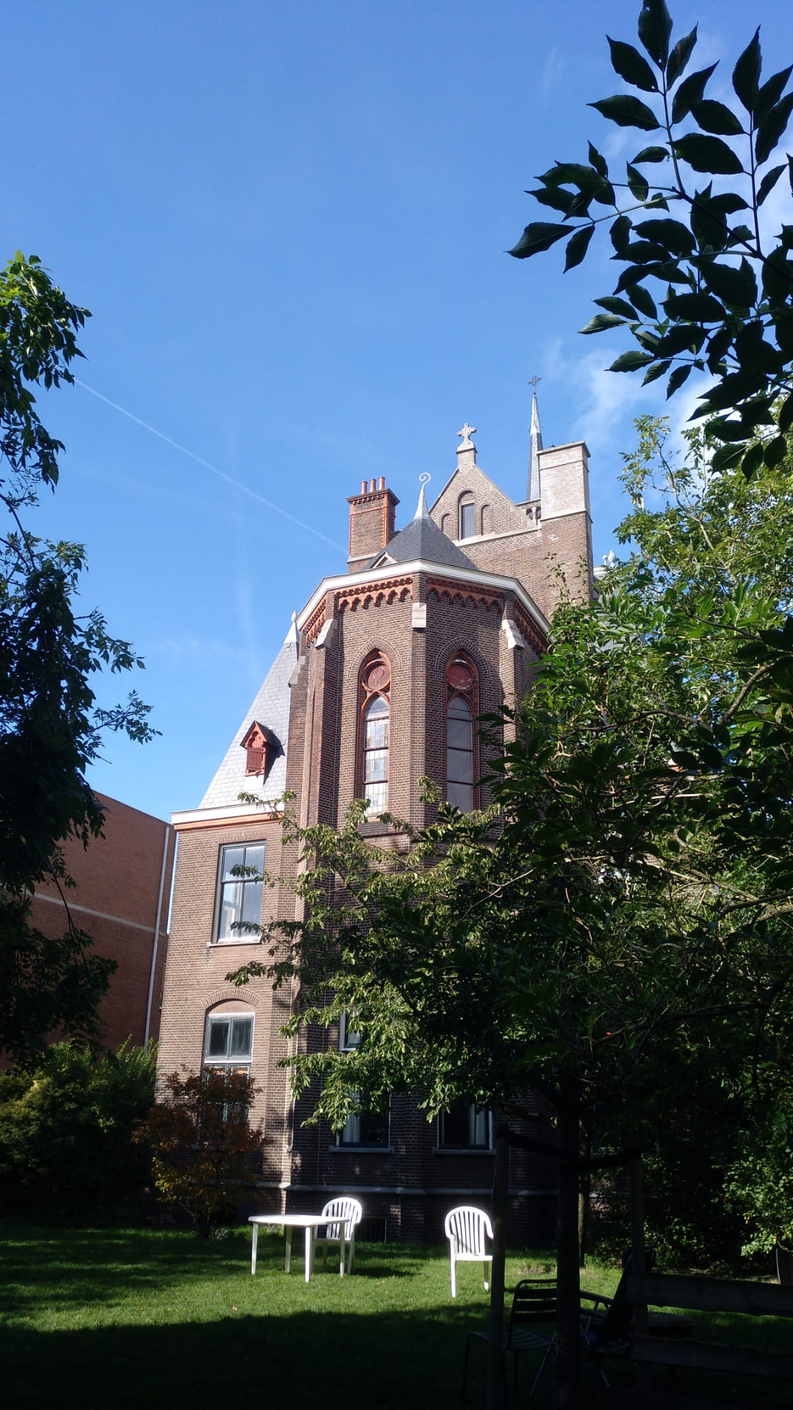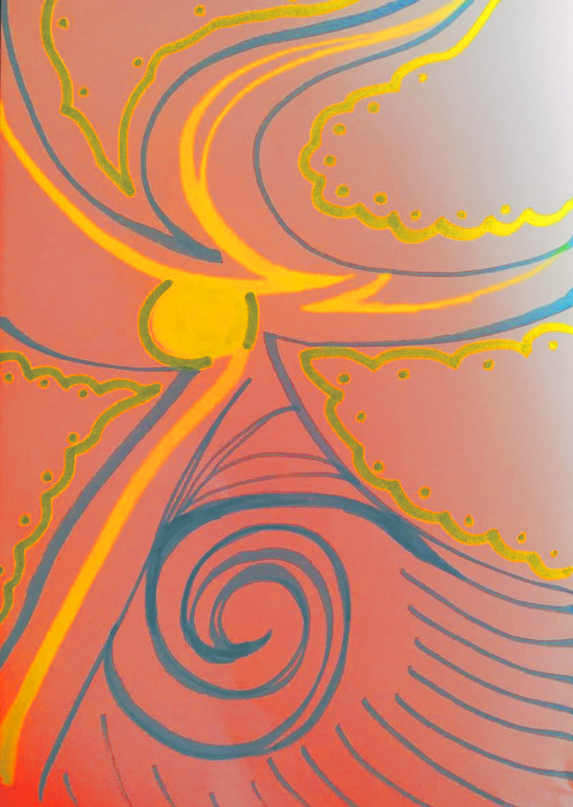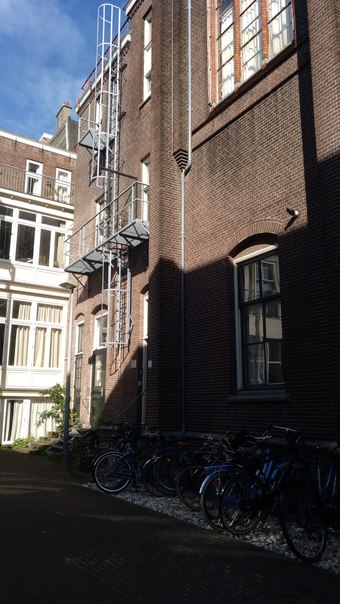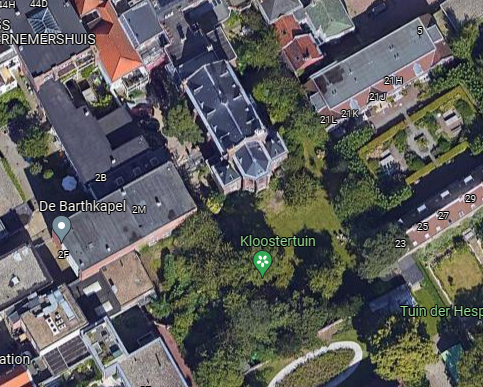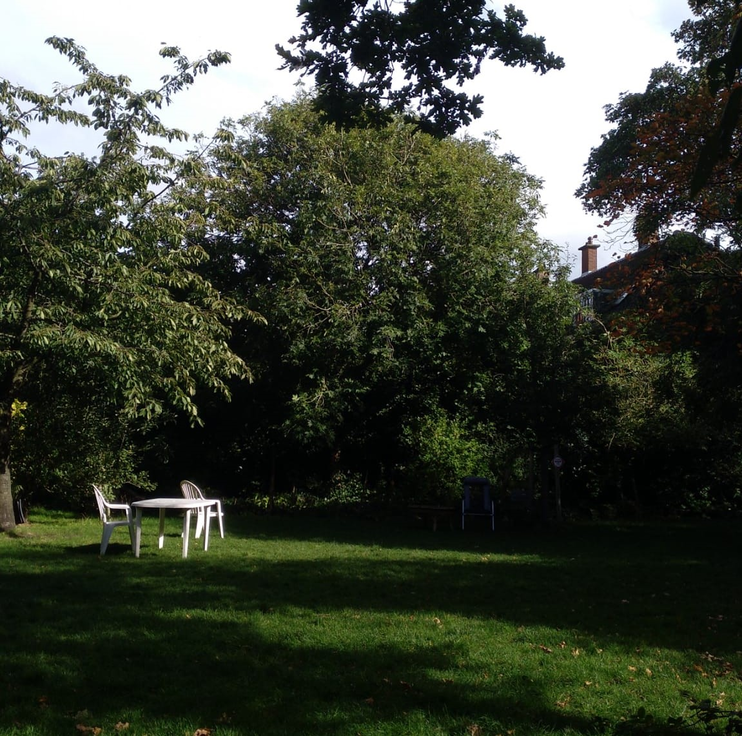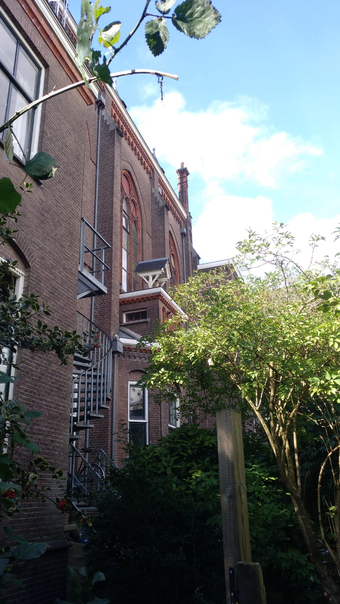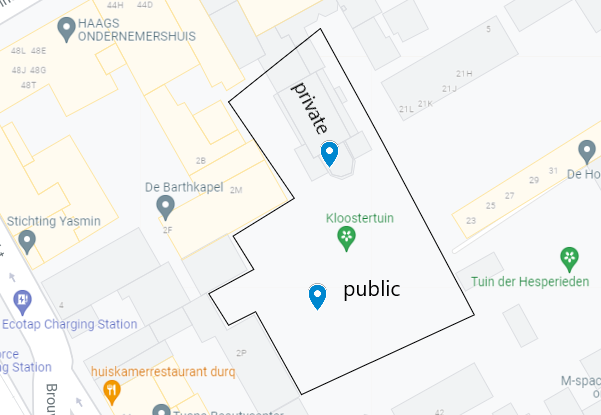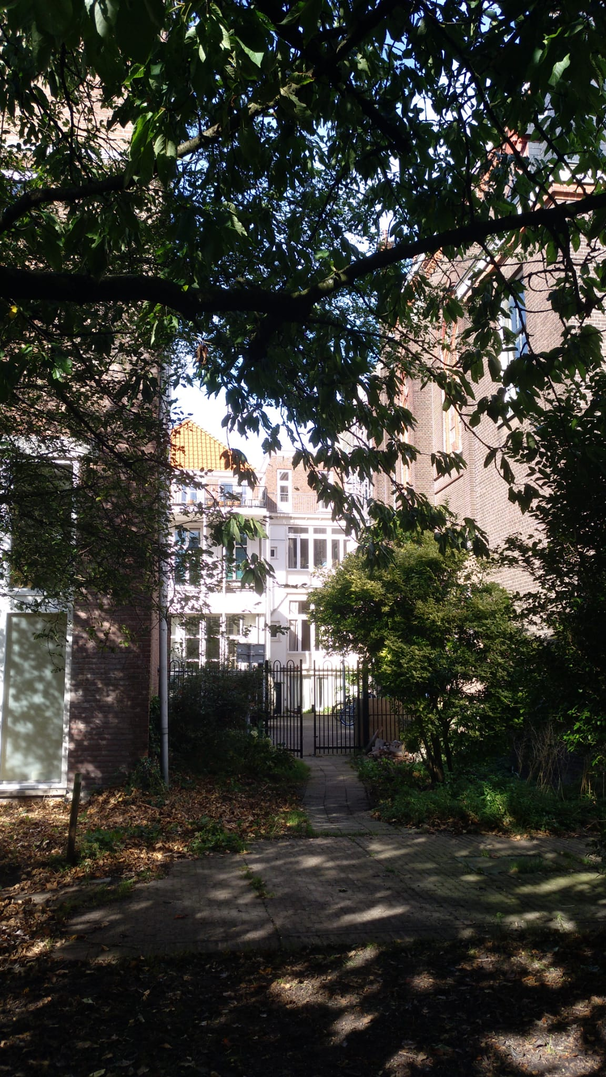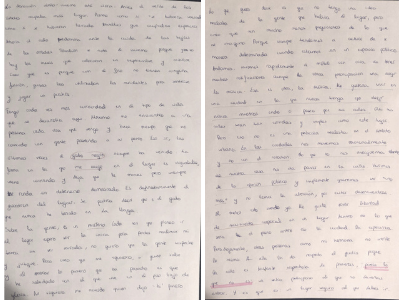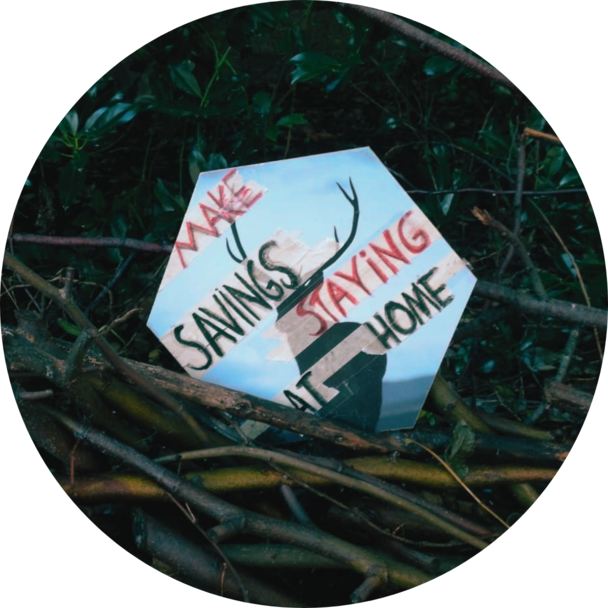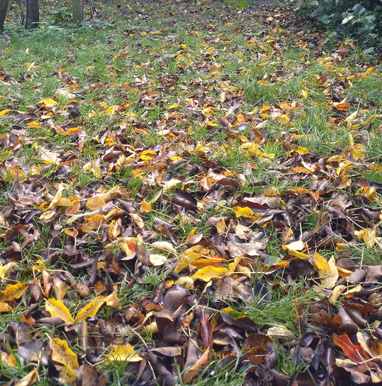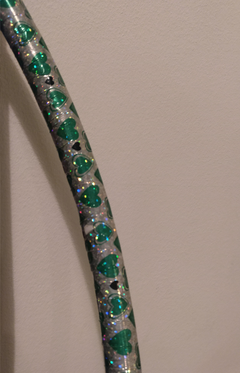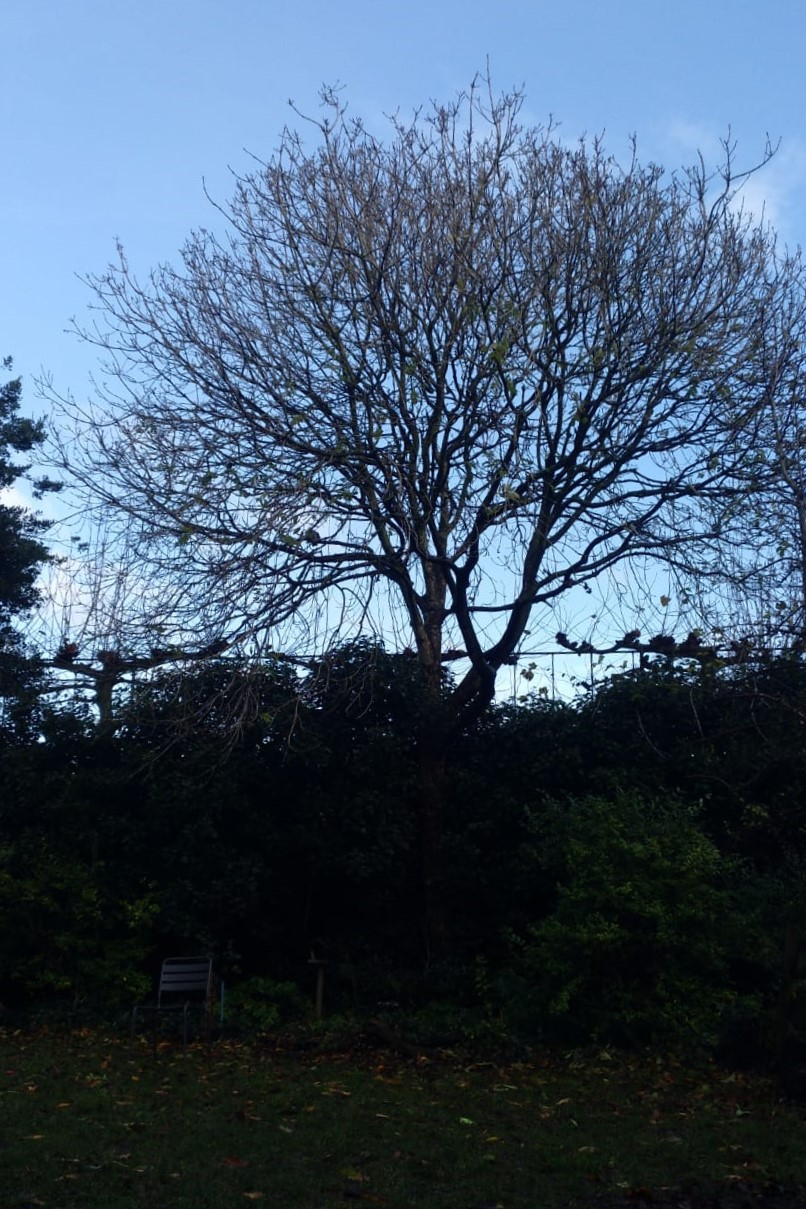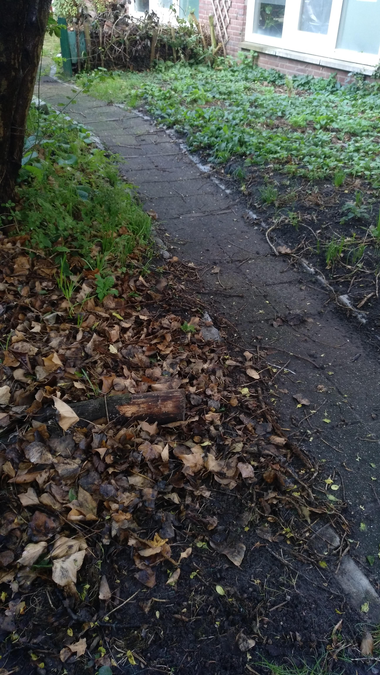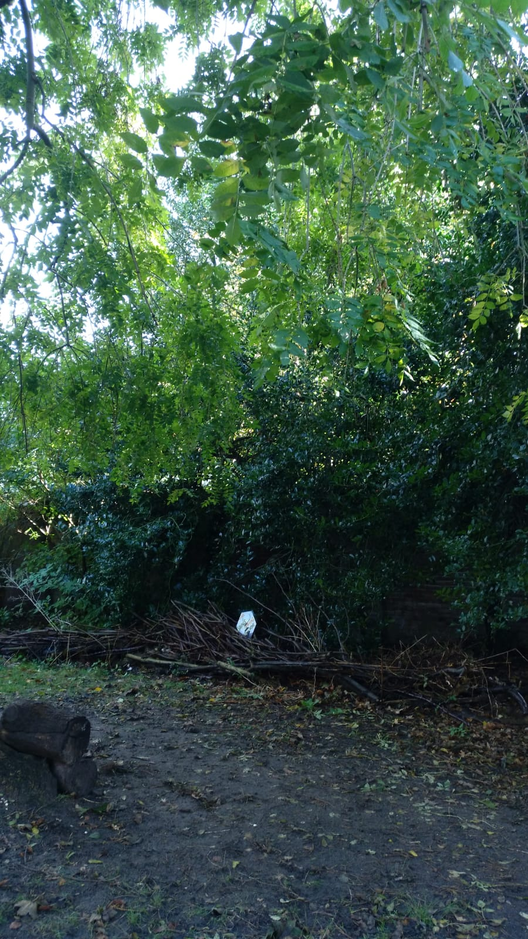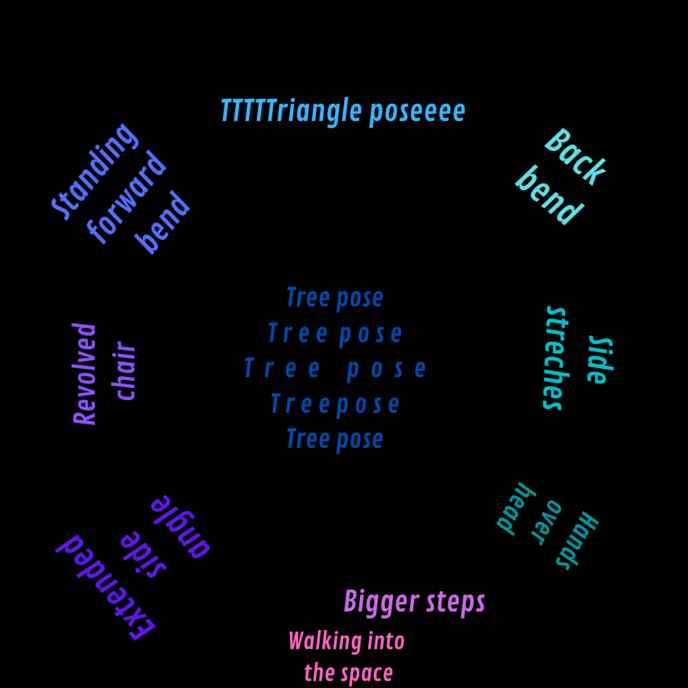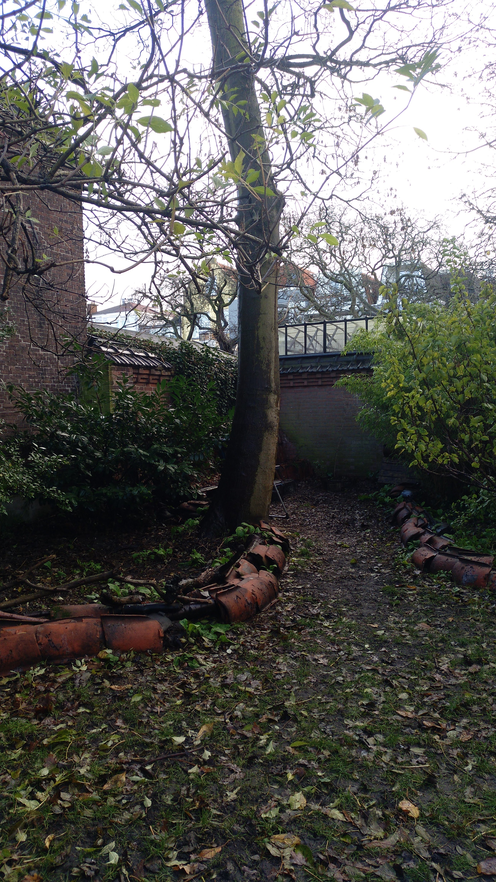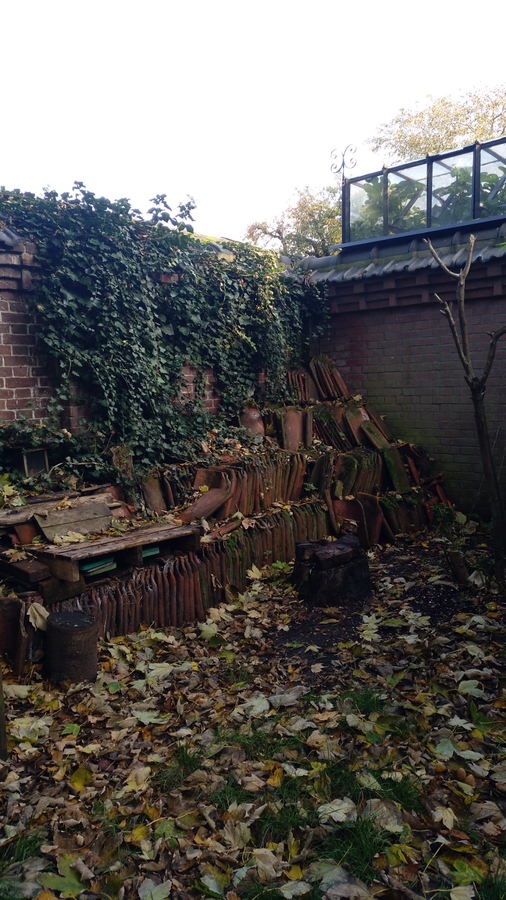I see the Kloostertuin garden as a form of community-based habitat with a quiet lifestyle inside the urban scene of The Hague.
The place is located in my near surroundings. I first visited the garden last September 10th when I was working as a temporary location manager for an exhibition. During the time span of 5 hours, when I was not with the visitors inside the building, I was contemplating the human activity of the small alley. I felt excitement and peace to encounter such an unexpected and unconventional place in the heart of The Hague's city centre. I think is great that churches are used for cultural events, which is something I am not used to see in my homecountry.
I was impressed by the common rhythm that shaped the space, a feeling that I normally miss when I walk around The Hague. By common rhythm I refer to the kind and open attitude the residents of that place have with me and the coming visitors. When I left, I wondered whether I would ever come back again. Yet here I am again, visiting the place on a weekly basis as the weather gets colder and sadder.
Quite different from transitional and transited sites, I have chosen this place because time is experienced differently from the majority of places through which we pass by when we are walking around The Hague's city centre. Time is defined by calmness, silence, and solidarity instead of anxiety, noise, and efficiency. Here one can encounter and practice the privileges of boredom, forget about the frenetic pace of the neoliberal city and be creative.
I am curious to explore how this affects the community and the environment.
13 Oct, 2021
During my attempt to design a map that crosses the boundaries of geography and convention, I closed my eyes from time to time to focus more on the sounds around me and to reflect about how to portray sun-light on paper.
Click on the images for more info!
idea/
foster togetherness and inclusivity in a city where people with different cultural identities co-exist.
celebrating who we are.
10 Dec, 2021
I came back to check if anyone had written something. I was quite unsure about it but I was gratefull when I saw the additions!
?1
?2
?3
6 Dec, 2021
Recycling an old agenda, I created a notebook to elevate the voices of the residents. I invited them to reveal their status, highlighting the aspects they like the most about themselves.
?4
?5
disturb/ introducing sarcasm
take care/ a humble act in autumn
collaborate/ walking, stopping, understanding
develop/ moving beyond the conventional logic of normality
Day in which I experimented how to 'disturb, 'take care', and 'collaborate' in the garden through action
3 Nov, 2021
review of my experience/
in the place & the meaning of the art actions, handwritten in my mother tongue
?6
I look to the ground and I see all the leaves that cover entirely the floor of the place. The garden also counts with the great initiative of a compost container. Apparently autumn leaves are an excellent source of high carbon material. So, I took a plastic bag where I piled up leaves and dumped them intto the container. It is a humble action; one that I would not consider as artistic.
The sign is visible to everyone. I choose to write “Make savings staying at home” because despite it is vague and ill-defined, almost everyone can relate to it personally. For me, it exposes the economic struggle experienced by many workers and students living in the city. My intention was to introduce an alteration that interrupts the relaxed atmosphere of the place.
They used to belong to the old convent of the Sisters of Charity of Saint Charles Borromeo, a Roman Catholic sister congregation from Maastricht. When they left the municipality planned to demolish the chapel and developed new construction plans for the monastery garden.Today, the volunteers of Kloostertuin Foundation take care of the preservation and management of the garden.
The chapel can now be rented for spiritual, cultural and social activities. Most common activities include yoga classes, concerts, vintage clothes markets, or other cultural activities such as the installation in which I was present back in September. The last and ground floor of the church are residential.
In a few words, I see the place as an unique example of how religious buildings can be adapted to present demands while keeping its religious function and how a green space can survive at the heart of the city independently of government funding.
What is the normal way to walk inside the city?
Are we free to adopt any posture while walking in the city?
Why most of us experiment shame when we behave in a unusual way in public spaces?
Why we are so afraid of being judged?
When I came back to the garden one week later, the sign was still there but with one difference: all the words except the first one had been removed. After three weeks, it finally disappeared. I like to think that this evidences that the action actually disturbed the place’s harmony. what do you think?
This is not a place where people’s individual walking paths congregate so often. I wanted to create different interactions of my body with the environment to emphasise the contrast of walking rhythms in between the garden and its hectic surroundings, aka the city centre. I went to the place with my sister and wandered there for about 30 minutes. I don't know what the intention of carrying a hula hoop was exactly but I thought it could create some contrast as the place is very monotomous in colour. Once again, I developed a new connection with the place through the act of walking.
We live with the urge to optimise time in order to be efficient because we are pressured to be productive constantly. Most people living in big cities are so used to this routine that we do not pay attention to the impact we have on our surroundings, something it can become quite complex to understand.
Inspired by stretching body movements, I designed this trajectory in collaboration with the space to analyse how the land is affected by the human act of walking. This action did not change the perception of the environment in an obvious way but it benefited my body and connected me with the place.
